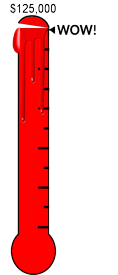

Thanks to your support in 2020!
 There are many questions when it comes to textile waste. Some of the things we are asked often include, “How are my clothing donations used and what is done to donations that are unusable?” and, “How are the textiles I donate being recycled?”
There are many questions when it comes to textile waste. Some of the things we are asked often include, “How are my clothing donations used and what is done to donations that are unusable?” and, “How are the textiles I donate being recycled?”
While textile waste is not yet included in the legislation, TWD is encouraged by proposed changes in Ontario’s Waste Diversion Act. We are setting in motion some exciting new initiatives that will help us to become an industry leader in textile waste management.
TWD has recently made a commitment to provide a platform for reputable textile waste collectors and the charities they service to come together and agree to fair competition practices and community minded operation standards.
We are also setting a standard for meticulous collection practices with a commitment from our competition to do the same. Ontario has a 25% textile waste diversion rate, and that means there is plenty of work to go around. The better the service commitments we all offer and adhere to, the more property owners like you will be inclined to choose to work with us.
We are putting in place a textile waste auditing system that tracks donations. The system will track usable and unusable textiles, and implement processes to deal with both in an efficient and environmentally conscious way. We will share this process with our industry partners, allowing other collectors to use the same process – so you can feel good about how donations are being used, no matter which certified collector you choose.
We are implementing value added uses for waste textiles that prevent sending any textiles to landfill.
Finally, we have some advice for property owners who may be considering putting a clothing donation bin on their property: Only offer permission to place donation bin to a reputable organization that offers meticulous service. If you find a bin on your property from any collection company or organization that does not have permission to be there, contact TWD at 1-888-980-8756 and we will be happy to remove the bin at no cost to you.
By allowing a reputable company to place a used clothing donation bin on your property, you are helping increase Ontario’s waste diversion rate, reduce landfills, protect groundwater and air all while creating good jobs. Used clothing donations are an important community building block, and on behalf of responsible collectors and charities everywhere, we thank you for your generous ongoing support.